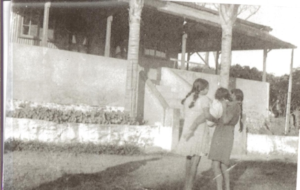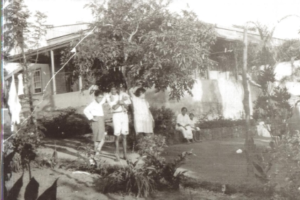Mahatma Gandhi (Gandhiji) established two settlements in South Africa before going to India and establishing his other Ashrams there. All his Ashrams were carefully selected to be in the heart of where the poor and deprived people lived.
In South Africa in 1900 he had family members who were living in the Tongaat area where he was invited to settle, but instead chose Inanda for his first ashram in 1904. This was strategically situated in the neighbourhood of the Shembe and Dube Settlements on the one side and the Mt Edgecombe and Phoenix sugar barracks on the other.
Here he invited people to come and stay with him on condition that they renounce accumulation of wealth, they do not claim ownership to the land and they adhere to a few general rules of the Settlement which they collectively evolved into the following eleven principles over a period of time.
These rules are: ahimsa-nonviolence, satya-truth, asteya-nonstealing, brahmacharya-leading a celibate life/sexual control or discipline and not necessarily abstinence,asangraha– non accumulation of wealth and possessions, sharirashya– build a healthy body through a work ethic, aswada– eat healthy food, sarvatra bhayavarjana –fearlessness, sarvadharmi samanathwa– equal respect for all religions and beliefs, swadeshi– purchase and make articles locally, swarshabhavana– treat all with the same dignity and respect. These eleven principles were evolved here and made up the content of his daily prayers when he returned to India.
His inspiration for the setting up of such settlements came from his visits to the Marrianhill Monastery run by Trappist monks at the time, as well as the philosophies of Count Leo Tolstoy and John Ruskin and was deeply moved by the three scriptures– The Bible, The Koran and the Bhagvad Gita. He was particularly impressed by the discipline of the monks and their daily routine in terms of a strictly adhered to time table. He imbibed this into his own life. He was also impressed by their utter simplicity and love that spread across all regardless of race, gender, class, religion and any other barriers. He developed these principles and imbibed them into his own life before promoting them in these ashrams. It was here that he developed his philosophies of life and his ideals. The final step towards communal and ascetic life was taken in 1913 when leaving South Africa and returning to his mother country, India.
Phoenix Settlement was established in pursuance of an ideal of simplicity, agrarian life, self sufficiency and communal values. Tolstoy farm was established out of a need, the need to care for and house Satyagrahis (people participating in nonviolent struggle) and their families. It was established 6 years after Phoenix. By this time some of Gandhiji’s own ideas were concretized. For instance his experiments with education with issues of conservation and environment and with the development of principles of struggle for human rights and justice, nonracialism, nonsexism, respect for all faiths, self sufficiency through simplicity and work ethic, values of communal living, social cohesion, respect and dignity, sharing of work (no division of labour/menial vs. skilled), learning of manual skills, healthy life style, agriculture and a code of conduct for Satyagrahis. These ideals were all entrenched at Phoenix Settlement and Tolstoy farm and became firm beliefs which informed the running of his other ashrams in India. A pioneer settler on Phoenix Settlement wrote,
At the daily prayers and the Sunday services at Phoenix, there was a joining together of men, women and children in a united spiritual exercise. Hindus, Muslims, Parsees and Christians sang hymns and read the various scriptures in different languages. This, to my mind, was a unique example of a universal church service, where no particular religion was placed in a superior position and where truth and love were acknowledged to be the universal attributes of God.
It is true that the residents comprised Indians and white residents and there were no African residents until one person brought his son who was African. He was assimilated into the commune with no issues.


